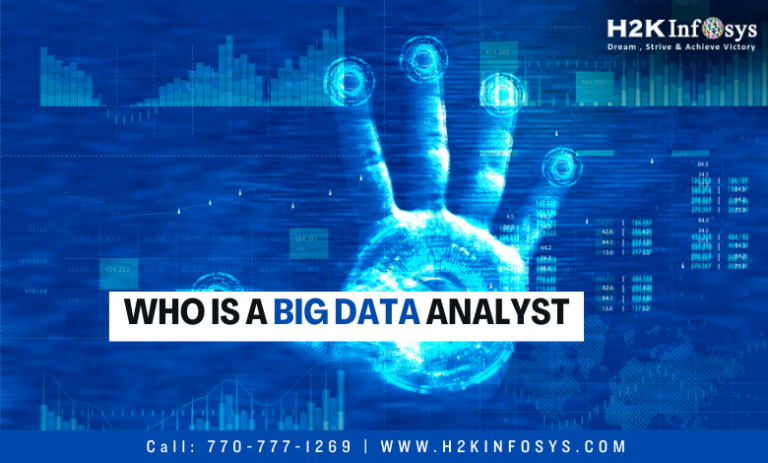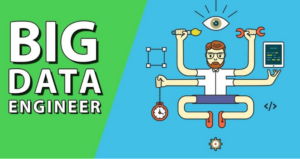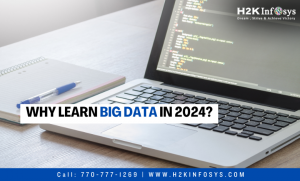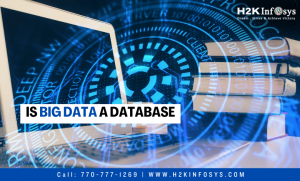You cannot think that the skill set and experience of traditional data analysts will be sufficient to deal with the complexities of Big Data in an era where Big Data is dominating. So then who steps up to save the day?
Big Data analysts are essentially data analysts in the purest sense of the word, but they differ significantly in that they work with large amounts of unstructured and semi-structured data rather than the structured data that traditional data analysts typically deal with.
Naturally, compared to traditional data analysts, big data analysts have different job duties and skill sets.
If you want to understand the job profile of a Big Data Analyst, this article is for you. Check out our big data Hadoop course to learn more.
Who is a Big Data Analyst?
Given that they both work with big data, data scientists and big data analysts frequently have similar job descriptions. Big Data analysts are in charge of comprehending these insights and figuring out how to translate them into workable business strategies, much as data scientists collect, clean, process, and analyse big data to find relevant patterns and insights.
The primary goal of big data analysts is to assist companies in realising the full potential of big data to positively impact business decisions.
Big Data analysts collect, evaluate, and interpret data from many sources, including company data warehouses, in order to extract useful information for businesses. They must create in-depth reports, graphs, charts, and other visual aids to help them communicate and visualise their results. The data findings are better understood by all stakeholders (technical and non-technical) when they are represented visually. The entire IT and business team can create ways to apply the insights to improve business decisions, generate revenues, influence customer decisions, enhance customer satisfaction, and much more if everyone has a clear understanding of the concept.
Businesses also use big data analysts to carry out competitive market analysis duties in order to pinpoint important industry trends.
Big Data analysts spend a lot of time utilising a variety of business, big data, and analytics tools, such as SAS, Tableau, QlikView, Hadoop, Spark, MongoDB, Cassandra, Hive, Pig, R, Python, and SQL, to analyse and understand data.
What are the job responsibilities of a Big Data Analyst?
Now that you have a general idea of what a big data analyst does, let’s look at some of their main responsibilities:
- to collect and compile data from various sources, organise, clean, process, and analyse it in order to glean insightful knowledge.
- to find fresh data sources and create strategies to enhance reporting, analysis, and data mining.
- to create SQL queries in order to retrieve information from the data warehouse.
- to build data definitions for newly added or modified database files in order to facilitate analysis.
- to assist the management team in making decisions, the results should be presented in reports in the form of tables, charts, or graphs.
- to create relational databases in order to find and gather data.
- to keep an eye on data mining systems’ performance and address any problems that may arise.
- to use statistical analytic techniques for the examination and research of consumer data.
- to monitor correlational patterns and trends in large, complicated data sets.
- to carry out standard analysis tasks in order to facilitate daily corporate operations and decision-making.
- to work together to create cutting-edge analytical tools with data scientists.
- to closely cooperate with the business management team and the IT team in order to achieve company objectives.
What are the skills required to become a Big Data Analyst?
Programming
Being a master coder in at least two programming languages is a prerequisite for a Big Data analyst (the more, the merrier). The foundation for carrying out statistical and numerical analysis on big data sets is coding. R, Python, Ruby, C++, Java, Scala, and Julia are a few of the computer languages that are most frequently utilised in big data research. Learn one language at a time and start simple. Other programming languages are also easily learned once you get the feel of them.
Quantitative Aptitude
In order to conduct data analysis, you need to have a solid foundation in mathematics and statistics, including time series, longitudinal analysis, hypothesis testing, probability distribution, linear algebra, multivariable calculus, and probability distribution.
Knowledge of computational frameworks
A big data analyst’s job is multifaceted. As a result, you must feel at ease with a variety of computing frameworks and technologies, including both simple tools like SQL and Excel and more complex ones like Hadoop, MapReduce, Spark, Storm, SPSS, Cognos, SAS, and MATLAB.
Skills in data warehousing
Working with relational and non-relational database systems, including HDFS, MongoDB, CouchDB, Cassandra, MySQL, Oracle, and DB2, is a skill that every Big Data Analyst needs to possess.
Business acumen
Without the ability to display the results from a business perspective, what use would the findings of Big Data Analysts be? A big data analyst needs to have a thorough understanding of business in order to apply the insights that are gathered to improve businesses. It is only after that they will be able to recognize possible business prospects and apply the data’s conclusions to improve the company’s course.
Proficiency in Communication
As we previously discussed, big data analysts need to be able to clearly communicate and present their results so that others can understand them. Therefore, in order to articulate their vision to others and simplify difficult concepts, they must have excellent written and verbal communication skills.
Data Visualization
Visualisations in your data help you communicate trends, patterns, and outliers. Making visualisations is a great place to start if you’re new to data analysis and looking for a project. Select graphs that make sense for the story you’re trying to tell. Pie charts show part-to-whole connections, while bar and line charts succinctly illustrate changes over time. Bar charts and histograms, on the other hand, show the distribution of data.
Data Mining
Data mining is the process of turning unstructured data into information that is useful. Speech recognition is one of the data mining tasks you can complete to strengthen your portfolio as a data analyst.
Spoken words are recognized by speech recognition software, which then transcribes them into written information. Install speech recognition apps in Python using tools like Watson-developer-cloud, Apiai, or SpeechRecognition. DeepSpeech is an open-source, free engine built on top of Google’s TensorFlow. The application allows you to turn speeches into writings.
Conclusion To learn more about becoming a Big Data Analyst, check out our online Big data training.






























One Response